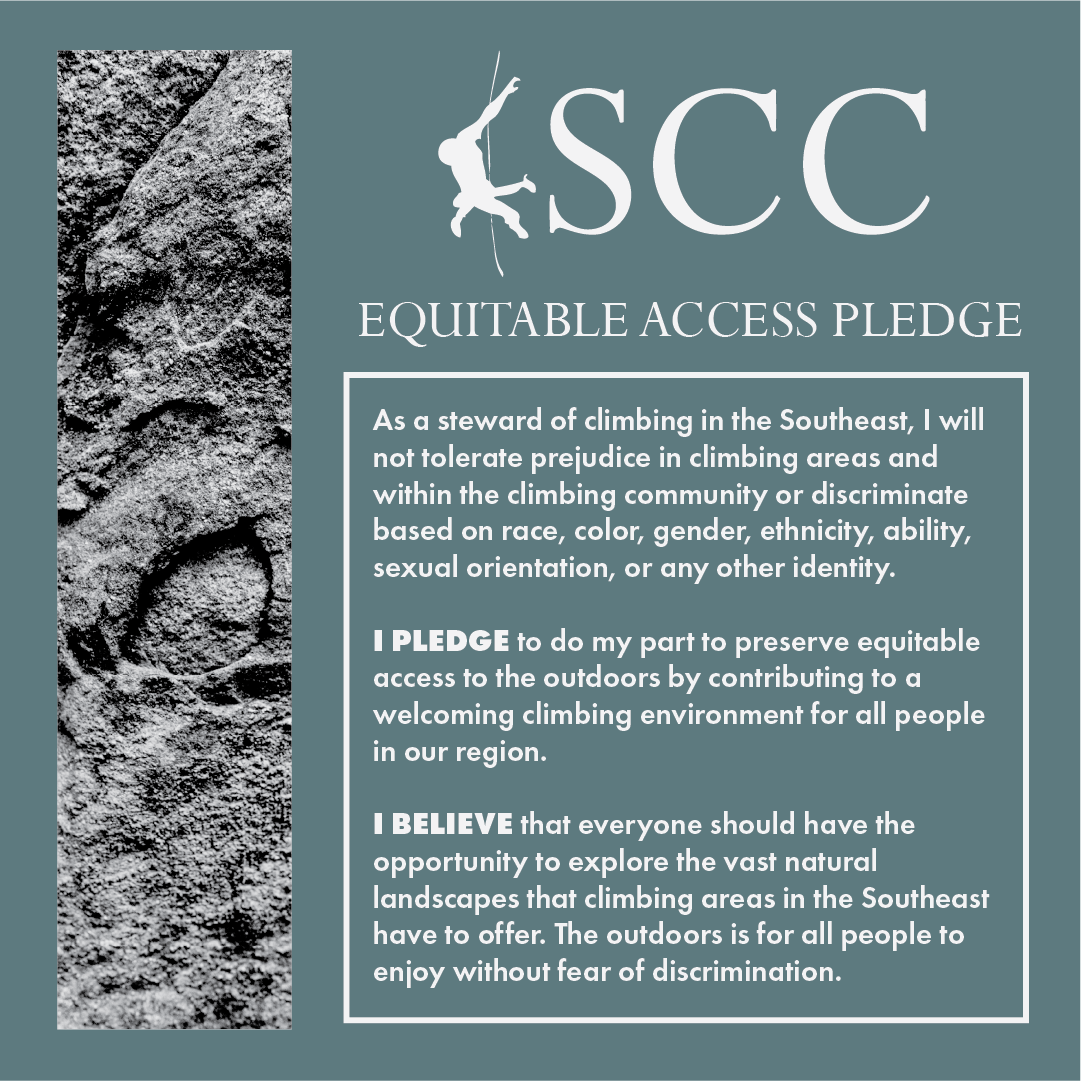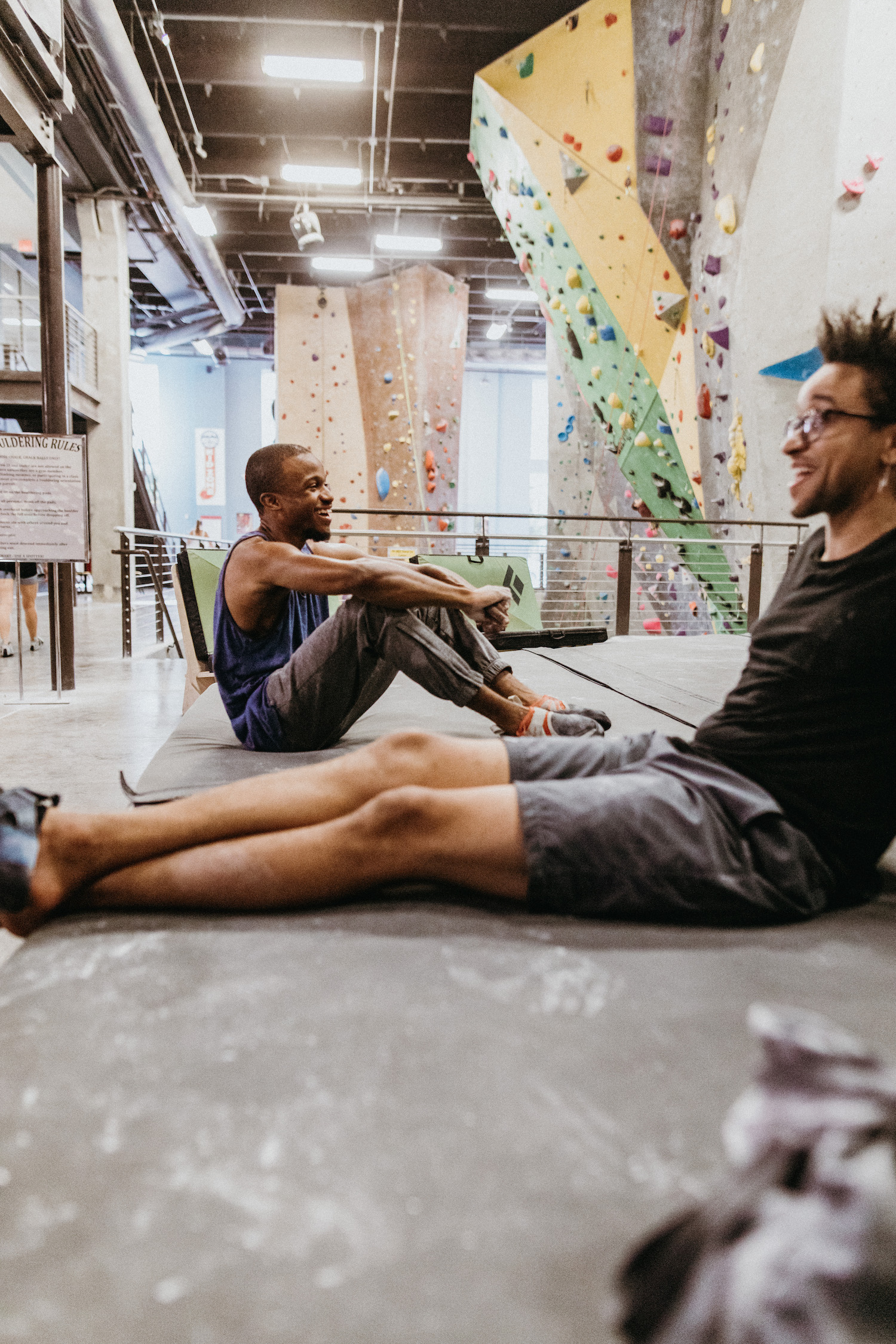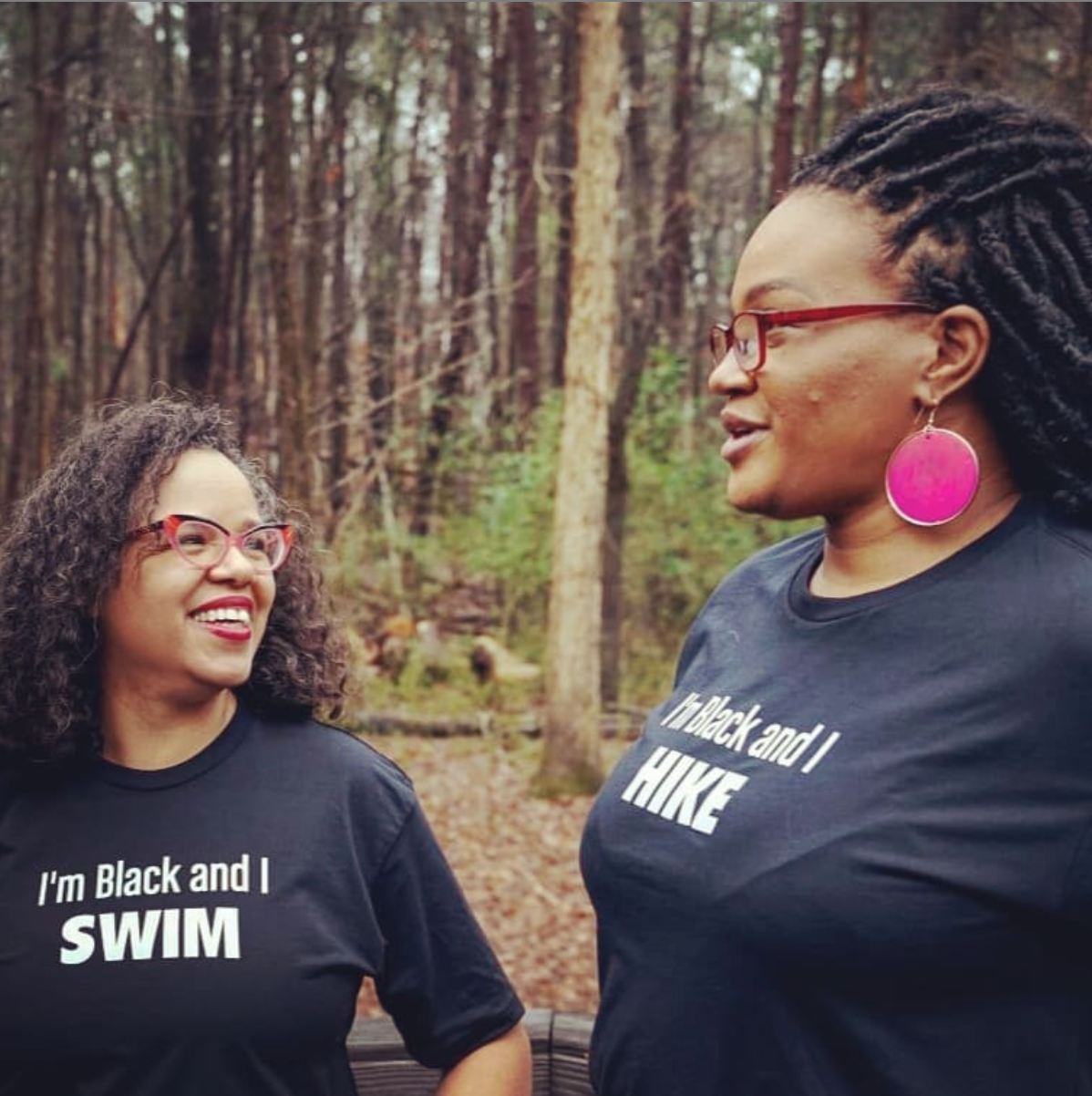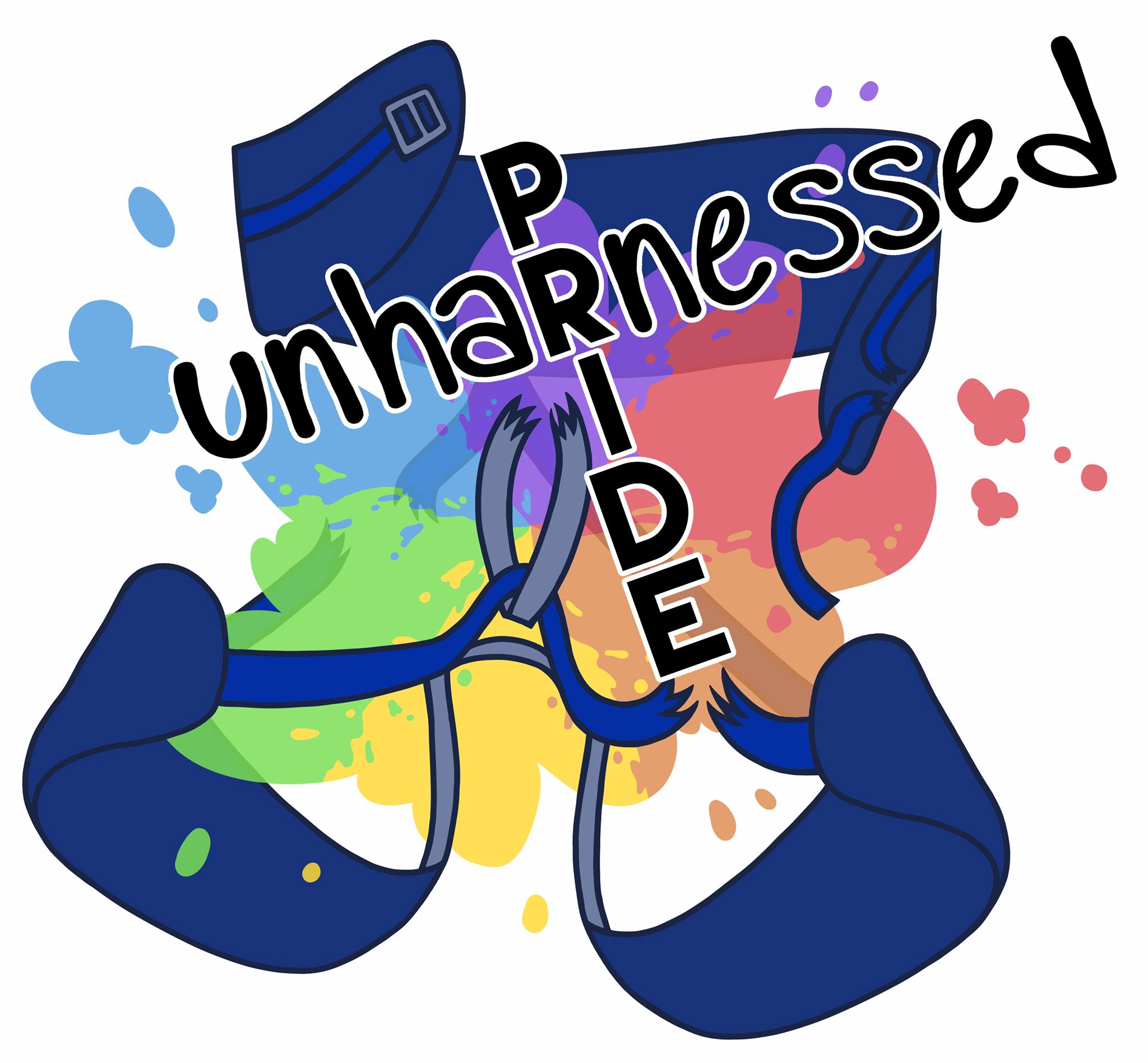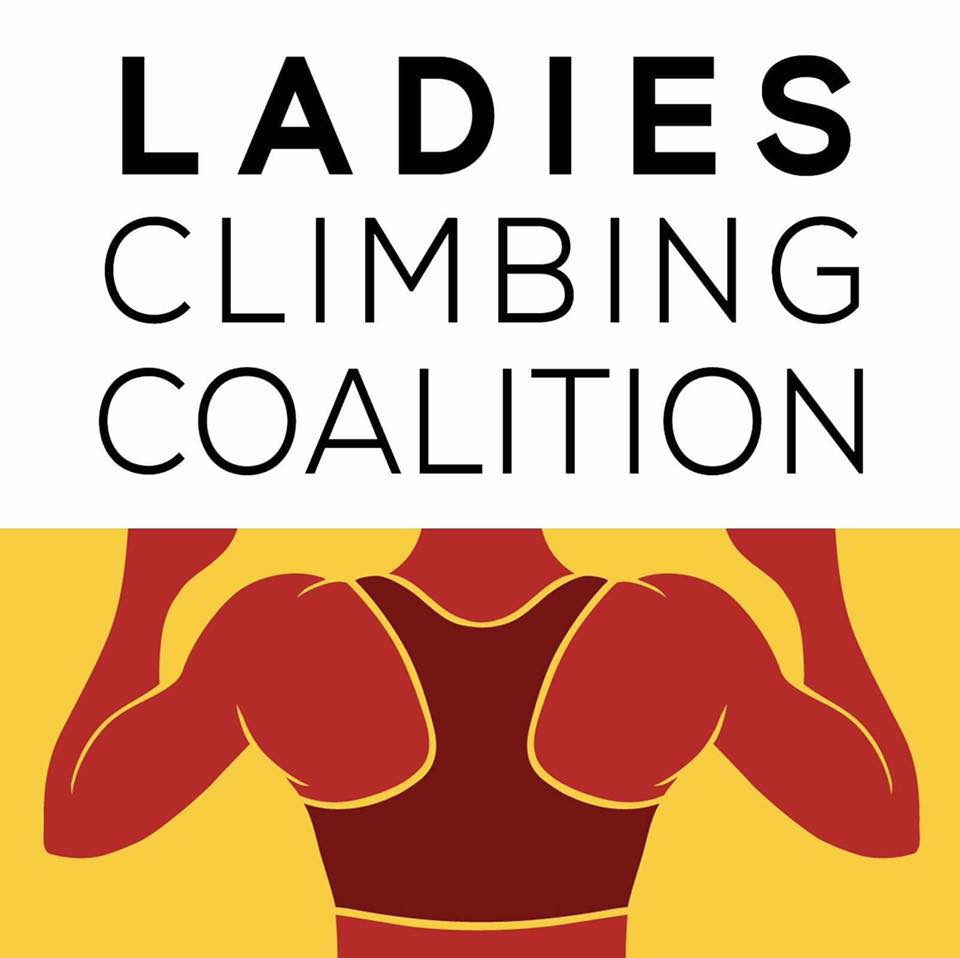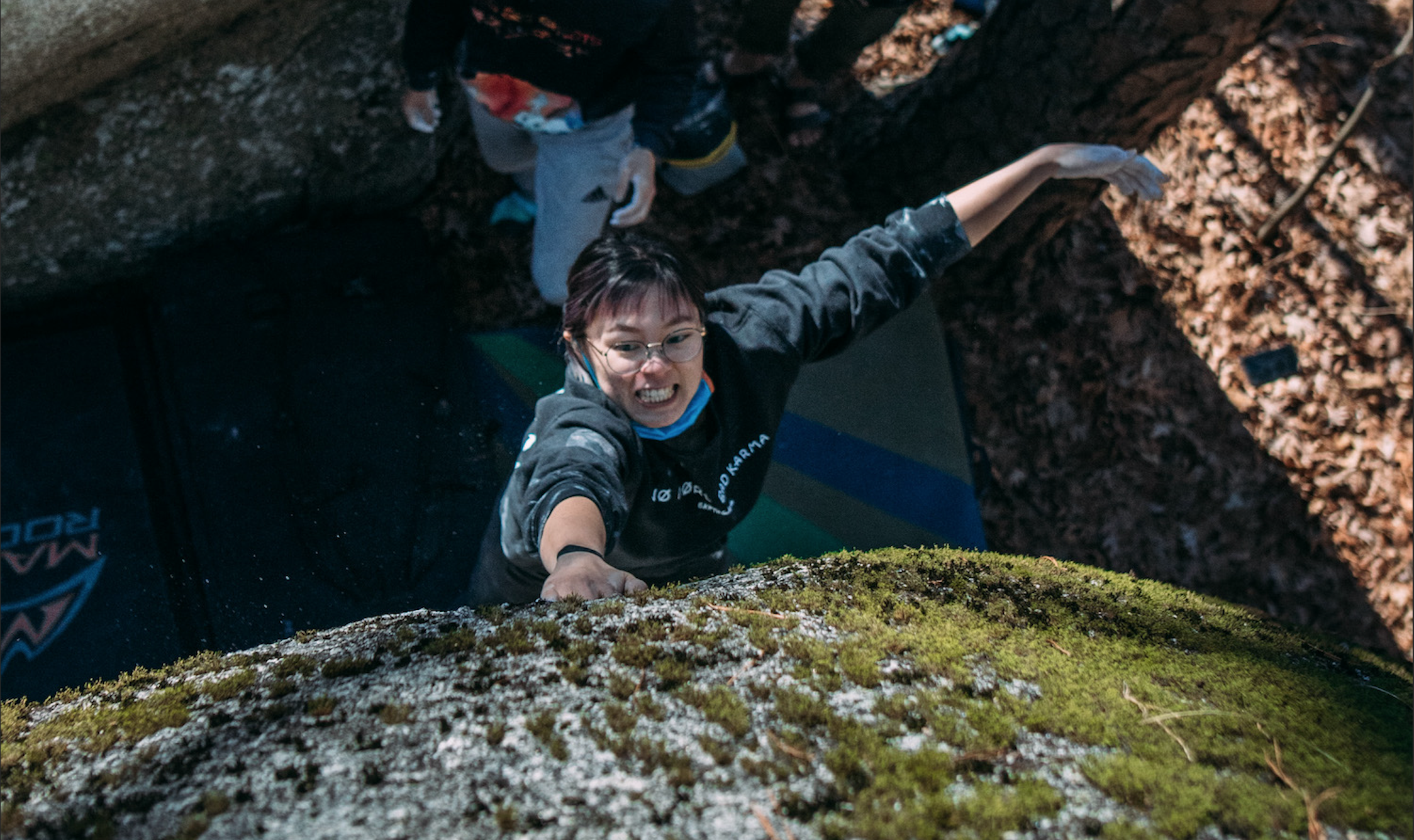

Sara Flowers
Tell us about your experience in the competition.
“This was my first competition, and my first time climbing outdoors EVER! It was great to have so many firsts out in the field: first outdoor send, first V3, first crack climbing, etc. What I really enjoyed was that this comp was virtual which not only kept us safe, but also allowed me to go to the field when it was convenient for my schedule. I really hope next year is a similar format.
When I submitted the application, my biggest concern was that climbing isn’t really accessible to those with financial concerns. I think many companies are becoming more aware of this and are trying to combat it with scholarships and giveaways. I also see a lot of clubs popping up that are also organizing more gatherings where they may share gear to make it an accessible experience regardless of your experience or access to gear.
I also noted in my application that the very “open and welcoming climbing community” was something that I hadn’t yet experienced. During this comp, most of my encounters were with others that were very friendly climbers stoked about climbing! Before getting into climbing, my biggest hobby was biking. In that community, there is definitely a difference between mountain bikers and road cyclist, the latter being more strict and rigid with their training, while mountain bikers are more free-spirits. I think this might apply to climbing as well: in the gym you find a lot of people that are training, perhaps having headphones in and keeping to themselves. Outdoors, you don’t see headphones which I think allows people to be more open to others and make friendships, bonding over projects and shared beta. That being said, I think outdoor climbing is something that we need to makes sure everyone has the opportunity to experience!
Overall, this was a very positive experience for me and has made me even more excited about climbing!”

Domanique Rahman
If you have experienced any barriers that have prevented you from getting into climbing or pursuing climbing further, what solutions would help you and others overcome those barriers?
“Climbing isn’t really a sport to be celebrated in my community, partly due to access, interest, and exposure. It didn’t even last too long after my season of participation in high school. With that said, although, personally, I have access to climbing out on Lookout Mountain Conservancy property, the lack of proper mentorship creates two main barriers for me.
For one, not knowing of or how to use the proper equipment can render the sport expensive. What do I need? How can I determine good vs poor quality? What type of shoes do I need for my style? What IS my style!? These are definitely questions that need answers, and frankly, pursuing the sport without such can lead to overspending when I really can’t afford it now. A proper mentor could help me minimize poor decision-making and maximize my available resources.
In addition to the cost, this same lack of knowledge alongside proper techniques could lead me to unwanted breaks, tears, strains, aches, pains, and ultimately, damage to my body. A proper mentor could prevent such catastrophes by sharing proper techniques. In the end, proper mentorship would not only make climbing safer and more affordable, but it’d also make me a better climber.”
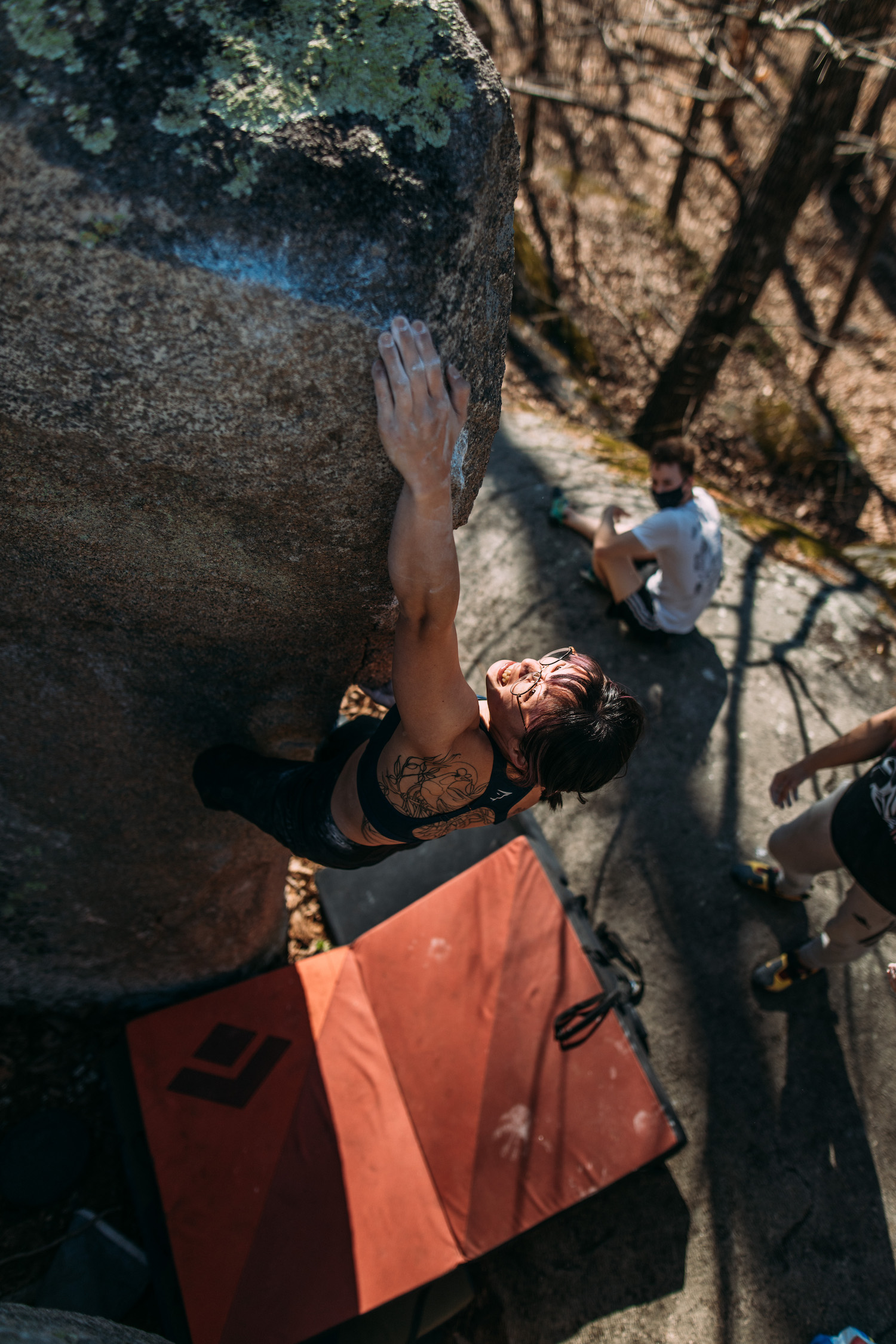
RUTH ERYEARN HUDSON
How do you think we can continue to address barriers to climbing as individuals and as a community?
“I have heard people ask, “why do we need to lower the barrier of entry into climbing for others? Want to climb outside? All you need is a pad and Mountain Project.”
Is that what you did?
I’m sure there are people who did start climbing outside in that manner. But for the majority of people, it was probably more like the following: You probably met someone in the gym who introduced you to the idea of climbing outside. Perhaps they gave you a list of some problems to try on your first day out. If you were lucky, maybe you even had some people willing to take you out on a trip with them. They probably put you on some climbs they’ve done before, so you can get familiar with the movement outside. Did they teach you not to leave trash outside and not to use your old toothbrush to clean sandstone? Even better!
Sure, you may have quickly graduated that stage and started taking trips solo, but nevertheless, you had somebody show you the ropes. Simply put, journeying out with someone more experienced than you can change the crux of the problem from finding the boulder in the first place to it being some move on the actual problem. Imagine taking a trip deep into the south by yourself to jump around in the woods. And tack onto this experience financial concerns (how are you going to pay for gas? Crashpads?) and fear for your own safety (yes, racism, homophobia, transphobia are real, folks). Climbing outside is challenging enough; outside competitions might be a little too much to add on top of that.
This is where I want to see the climbing community step in. People need to rid the notion that a guidebook and some willpower is good enough to get someone climbing outside. In fact, I think it is this very idea that has harmed the crags we all loved; packing out trash, leaving wildlife alone, not climbing after wet weather, etc., have turned out to be some of the lessons people seem to not learn alone. I see the high-barrier of entry for marginalized groups and this harm being done to our environment as problems that could both be eased by mentors who can show the ins and outs of outside climbing.”
The mission of WeClimb is to use rock climbing as a tool to help people become better versions of themselves and increase diversity in the climbing world.
Despite the fact that more people today are climbing than ever before, only 1.5% of USA Climbing members identify as African American. Through their programming, we hope to change this statistic and provide a safe space for people of all backgrounds to come together and enjoy climbing.
